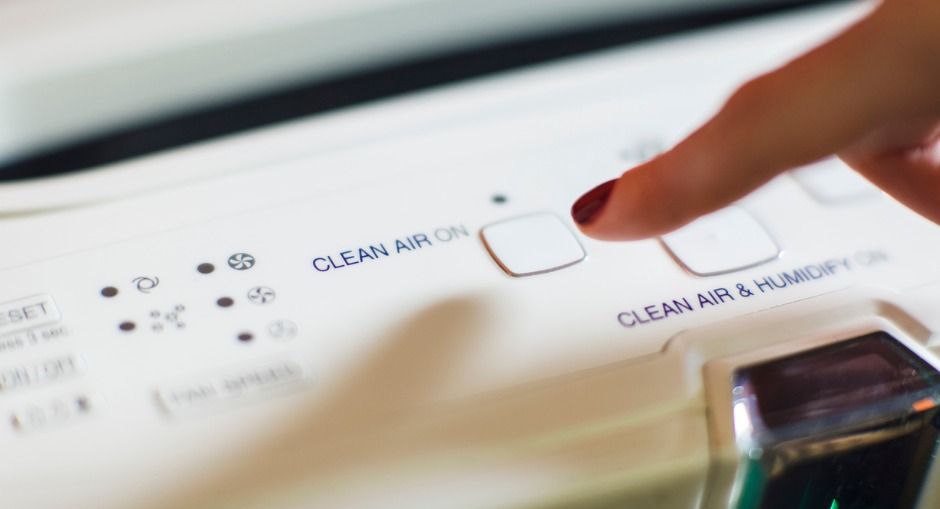
Hay fever season is here again. For many people that means a trip to the chemist for antihistamine tablets and sprays that make the season bearable. But what if you could prevent hay fever by cleaning the air instead?
Benefits of Using an Air Purifier
An air purifier is designed to remove contaminants in the air including particles of pollen and dust that cause problems for hay fever sufferers and asthmatics. Pollutants can mean indoor air quality is five times worse than the outdoor air. Purifiers are also well used in polluted cities to improve the indoor air quality.
There’s a range of benefits associated with using an air purifier in the home and office.
In the Office
Many offices don’t have windows that can be opened. While the lack of windows is ideal for keeping pollen and other allergens out of the workspace, the lack of fresh air can make the office feel stuffy and reduce air quality. An air purifier can:
-
Clean stale air
-
Remove odours from heating lunch meals
-
Reduce airborne pollutants
-
Reduce environmental allergens
-
Remove airborne viruses
Since the 1990s workers have become more aware of the dangers of Sick Building Syndrome.
Air purifiers can help with reducing the pollutants that cause sick building syndrome including compounds emitted from floor coverings, furniture, paint, and cleaning products.
Some of the nasty toxic chemicals found in indoor air include carcinogens including benzene, formaldehyde and trichloroethylene.
Offices with a carpark or garage connected by an internal door have the impact of car fumes entering the workspace.
At Home
Some people use an air purifier in living areas to improve the air quality of the main areas of the house or in bedrooms of family members who suffer the most from poor air quality. An air purifier can:
-
Reduce blocked nose or sore eyes from allergies when waking
-
Reduce snoring and sleep apnea when bedroom air is filtered
-
Assist with sleep at night when bedroom air is filtered
-
Reduce the amount of pet dander and fur floating in the air
Improving Air Quality with Plants & Purifiers
Offices and homes may benefit from the addition of indoor plants to help with air filtration. Plants can increase oxygen levels, improve air quality and provide a touch of nature.
The best types of plants are those that can survive in low light conditions, are hardy and have the best air cleaning properties.
Some plants that tick all the boxes for your workspace and home include:
-
Devils Ivy – very hardy, ideal for placing high and letting the leaves trail down
-
Peace Lily – attractive white flowers and glossy green leaves
-
Philodendron – pretty heart shaped leaves with moderate light and water needs
-
Rubber Plants – they appreciate bright filtered light and reward you with attractive foliage
-
Spider Plant – popular for decades, these plants can survive in most conditions
-
Areca palm – when you need a plant with height for a large space, these palms are perfect, non-toxic to pets who might decide to nibble on the leaves
-
Weeping fig – another ideal large plant that likes direct sunlight rather than dark corners
-
Snake Plant – low maintenance succulent that thrives on a lack of water
-
Bamboo Palm – one of the tallest indoor, pet friendly plants
Air Purifier FAQs
Not many adults grew up with an air purifier in the home, so there's some mystery about air purifiers and how they work.
Where do I place an air purifier in the office?
If the unit is adequate for the right size of the room, it doesn’t matter where it’s placed. All of the air in the room should be replaced up to two times per hour.
Do air purifiers work in cubicles?
Yes, due to their size, cubicle air can be cleaned relatively quickly using a small desktop air purifier unit. But don’t let their small size fool you, they are effective at removing 95% of common pollutants including mould, bacteria, dust and VOC odours.
Pros and cons of desktop vs floor standing air purifiers
Desktop units are small and don’t have large energy requirements. They can connect to a docking station, laptop, power bank or mobile power adapter. But they can only cope with up to 1.5 square metres of air, no bigger than a cubicle.
A floor standing unit can purify the air of larger areas. If you work in a large open plan office, it’s more difficult to purify the air in your part of the office but a large room purifier can clean up to 70 sqm. Air filters are available for small rooms, medium rooms and large rooms.
If you have any queries about air purifiers for your work or home space, call Ergolink on 9240 7066 or contact us online.